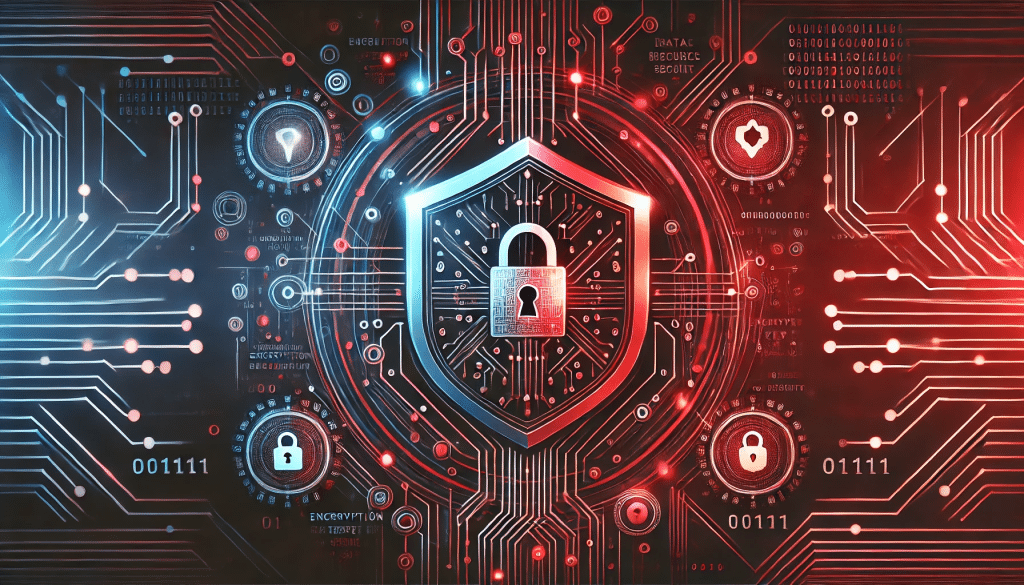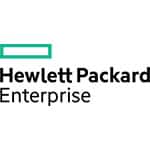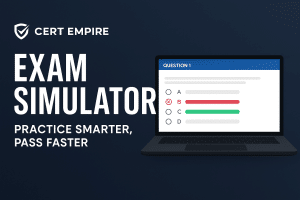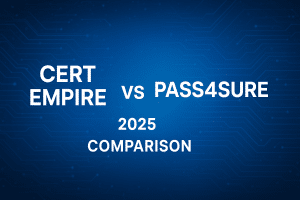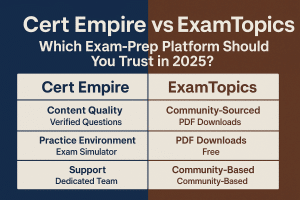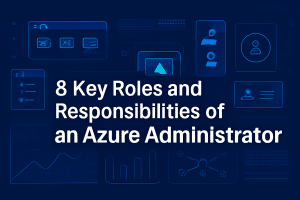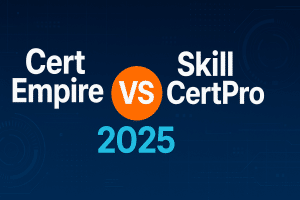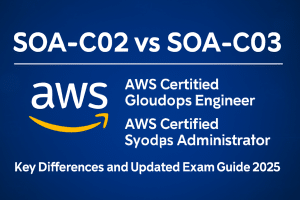Cybersecurity is no longer a niche field; it’s the backbone of every organization that deals with sensitive data. From protecting personal information to securing complex networks, the demand for skilled security professionals is skyrocketing.
But with so many certifications out there, figuring out which one to pursue can feel like trying to solve a puzzle without all the pieces.
The SY0-701 certification stands out for its focus on practical, real-world security skills. If you are serious about advancing your career and making an impact in cybersecurity, the SY0-701 security exam is a step in the right direction. This guide will walk you through everything you need to know, from what the exam entails to how to prepare effectively and why this certification matters in 2025. Let’s get started.
Understanding the SY0-701: What This Exam Covers?
Comprehensive Guide to the SY0-701 — At-a-Glance (2025)
| Certification | CompTIA Security+ (SY0-701) |
|---|---|
| Issuer | CompTIA (vendor-neutral, globally recognized) |
| Level & Focus | Entry-level foundational cybersecurity; practical, real-world skills (threats, architecture, implementation, IR, GRC) |
| Who Should Consider It? | Beginners testing cybersecurity Mid-level IT pros pivoting to security Experienced practitioners refreshing credentials |
| Industries & Roles | Industries: Tech/IT, Healthcare (HIPAA), Finance/Banking (PCI-DSS), Government/Public sector (framework-aligned) Roles: Security Analyst, SOC Analyst, System Administrator, Cybersecurity Consultant, IT Auditor |
| Question Types | Multiple-choice (single/multiple) + Performance-Based Questions (PBQs) with hands-on scenarios |
| Exam Length | ~90 questions • 90 minutes • Passing score 750 (scale 100–900) |
| Renewal & Compliance | Valid 3 years; renew via CEUs/activities or retake • DoD 8570 compliant |
| Core Domains & Weights | Threats, Attacks & Vulnerabilities – 24% (malware, phishing, DoS, vuln analysis) Architecture & Design – 21% (secure network design, zero trust, virtualization, cloud) Implementation – 25% (controls, crypto, IAM/MFA, firewalls, hardening) Operations & Incident Response – 16% (IR process, logs/SIEM, forensics basics, DR/BCP) Governance, Risk & Compliance – 14% (policies, frameworks, GDPR/HIPAA/PCI, risk) |
| Preparation Highlights | Prioritize high-weight domains (Implementation, Threats/Attacks). Build a plan, use official guides, labs/simulations, and timed practice tests. Treat PBQs as mini-labs. |
| Tip For time management, clear quick MCQs first, then tackle PBQs. Keep notes concise and review weekly to retain concepts across all five domains. |
|
The SY0-701 is a certification by CompTIA. It isn’t just another certification you tack onto your resume; it’s a deep dive into the essential skills cybersecurity professionals need to stay relevant. This isn’t about memorizing buzzwords or skimming through a textbook. Instead, it focuses on actual, actionable knowledge that directly applies to protecting systems, responding to threats, and keeping data safe.
At its core, the SY0-701 exam revolves around understanding and applying security principles in practical scenarios.
The topics cover everything from your security posture identifying vulnerabilities to designing secure systems and even managing risks in compliance-heavy environments. It’s a holistic security certification, that doesn’t just stick to one aspect of security but spans multiple critical areas to give you a comprehensive skill set.
For a complete roadmap with structured strategies, explore our ultimate SY0-701 exam preparation guide to plan your study effectively.
Who Should Consider the CompTIA SY0-701 Certification?
The SY0-701 is a versatile certification, but it isn’t for everyone. If you’re eyeing it, you need to ask yourself one thing; do you want to work in cybersecurity and stay competitive in a field that’s growing every second? If yes, this certification is a solid choice.
For Beginners Testing the Cybersecurity Waters
If you’re new to cybersecurity, the SY0-701 is like a crash course that helps you get the basics right. It doesn’t assume you’ve got years of IT experience, which makes it ideal for someone transitioning from another field or just beginning their career.
Sure, you’ll need to put in the effort to understand foundational IT concepts, but the certification lays it all out in a way that’s easy to grasp if you’re committed.
Mid-Level Pros Looking to Boost Their Credentials
Let’s say you’ve been working in IT for a while but want to specialize in cybersecurity. Maybe you’ve handled network troubleshooting or supported users, and now you’re itching for something more challenging. The SY0-701 bridges the gap between general IT skills and focused network security, awareness and knowledge.
For those with experience, it also validates what you already know while introducing you to new concepts. It’s a practical way to show employers that you’re ready to take on more responsibilities, especially roles involving incident response or system protection.
Experienced Cybersecurity Practitioners
Even if you’ve been in cybersecurity for years, the SY0-701 has something to offer. Certifications don’t just prove your knowledge—they show employers that you’re keeping up with current trends. And let’s face it, this field changes fast. A cert like SY0-701 can act as a refresher for experienced practitioners or even a requirement for those eyeing roles in regulated industries.
For detailed coverage of exam objectives and domain breakdowns, check out this CompTIA SY0-701 exam guide.
Industries and Job Roles That Value SY0-701 Credentials
You might think certifications are just a piece of paper, but the SY0-701 carries weight in several industries. It’s recognized globally, and the skills it focuses on are relevant in almost any organization that uses technology.
Tech and IT Companies
It’s obvious, right? Tech firms need people who can secure their systems, manage vulnerabilities, and stop attacks before they cause damage. Security roles in these companies often list SY0-701 or equivalent certifications as a must-have. Think Security Analyst, Penetration Tester, or even IT Auditor.
Healthcare
Healthcare isn’t just about doctors and nurses—it’s a data goldmine. With so much patient information stored digitally, hospitals and clinics are prime targets for cyberattacks. If you’re SY0-701 certified, you can work in roles ensuring compliance with regulations protecting data, like HIPAA and safeguarding sensitive data.
Finance and Banking
Where there’s money, there are hackers. Financial institutions are always hiring cybersecurity experts to secure transactions, protect customer information, and fend off attacks. Roles like Risk Analyst or Security Consultant are common in this sector, and a SY0-701 certification can help you stand out.
Government and Public Sector
Governments worldwide are prioritizing cybersecurity, and many have specific frameworks that align with what you learn in the SY0-701. Roles like Cybersecurity Specialist or Network Defense Analyst often require this cert, especially in defense or intelligence agencies.
Job Roles to Watch
The SY0-701 opens doors to roles like:
- Security Analyst: Monitor systems for threats and respond to incidents.
- SOC Analyst: Work in a security operations center, analyzing and handling alerts.
- System Administrator: Securely configure and maintain servers and networks.
- Cybersecurity Consultant: Advise companies on security policies and implementations.
- IT Auditor: Ensure systems comply with industry standards and regulations.
To explore more cybersecurity job roles and salary trends for SY0-701 certified professionals, take a look at this detailed guide: https://certempire.com/jobs-and-trends-for-sy0-701-professionals/
Key Domains in the SY0-701 Exam
The SY0-701 exam is divided into five main domains that cover everything a cybersecurity professional needs to know to handle today’s threats.
Each domain represents a slice of the bigger picture, and understanding them thoroughly is essential if you want to pass the exam.
Let’s break them down, discuss what they cover, and how to master them.
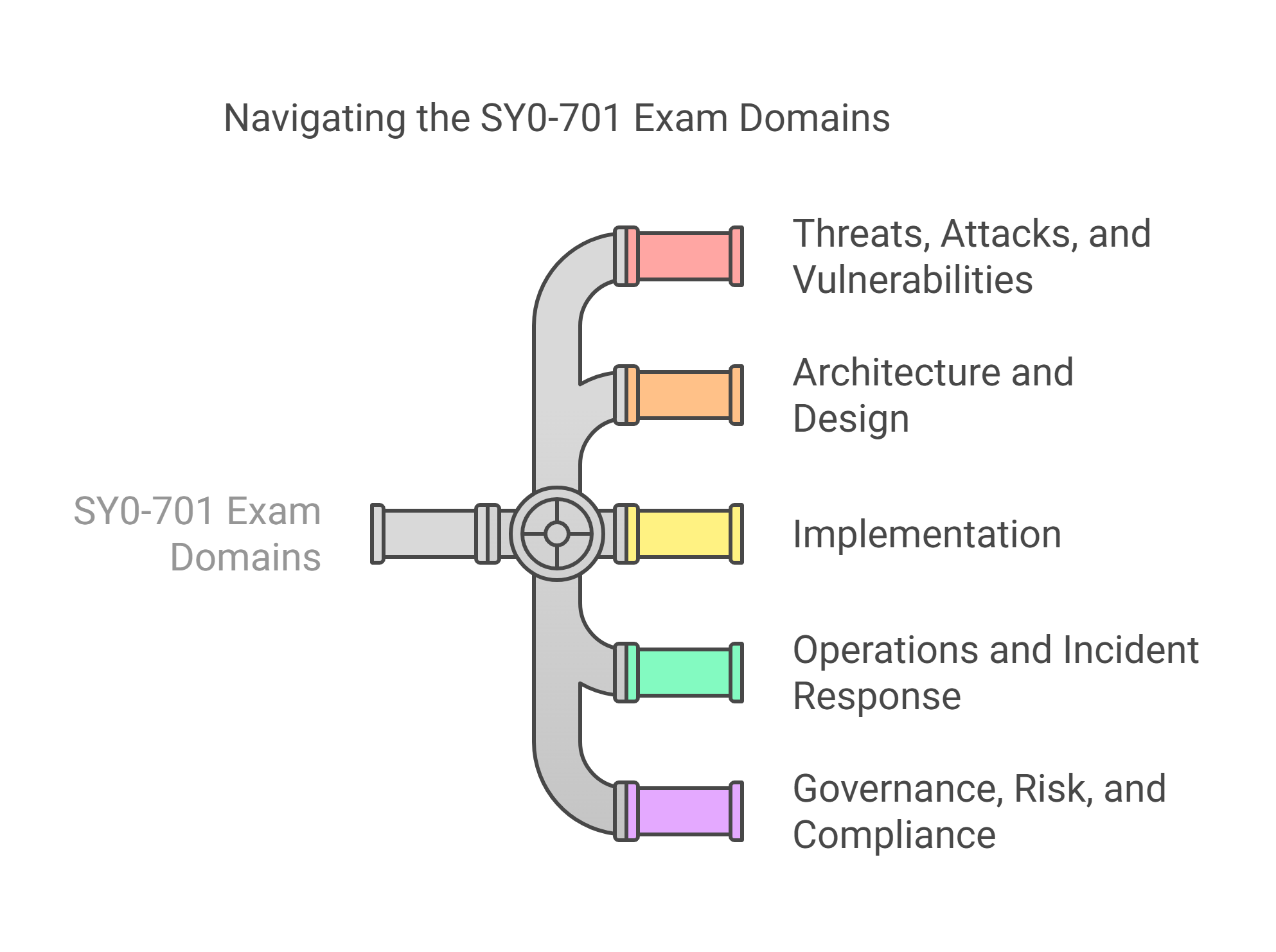
Threats, Attacks, and Vulnerabilities
Cybersecurity starts with knowing the enemy. This domain focuses on the daily threats and security events that organisations face, how attackers exploit weaknesses, and how to identify vulnerabilities before they’re exploited.
This section dives into different types mitigation techniques of attacks, from malware to social engineering. You’ll learn how phishing emails trick users, how ransomware can cripple an entire network, and why outdated software is like leaving your front door wide open.
To master this domain:
- Stay current: Cyber threats evolve constantly, so follow cybersecurity news and case studies.
- Practice analysis: Use tools like Wireshark to study traffic and identify suspicious patterns.
- Get hands-on: Platforms like TryHackMe or Hack The Box let you test your skills in safe environments.
Architecture and Design: Building Secure Systems
This domain is all about architecture models creating structures that are resilient to attacks. Whether it’s segmenting networks, implementing secure software design principles, or understanding how encryption works, this section focuses on building a security architecture into every layer.
For example, you’ll dive into general security concepts, security techniques like defense in depth, where you create multiple layers of protection so that even if one fails, others hold strong. You’ll also explore secure configurations for devices, cloud environments, and virtualized systems.
To nail this domain:
- Learn frameworks: Understand how NIST, ISO, or other standards guide system design.
- Experiment: Use virtual labs to set up and secure environments.
- Understand tools: Know how firewalls, IDS/IPS, and load balancers contribute to secure architectures.
Implementation: From Policies to Practical Applications
This is where things get hands-on. While the earlier domains are more theoretical, this one is all about putting security practices into action. It covers everything from configuring firewalls to setting up multifactor authentication and encrypting data in transit and at rest.
You’ll also focus on implementing physical security measures like endpoint protection, securing wireless networks, and managing identity and access management and controls. If you’re the kind of person who likes rolling up your sleeves and getting stuff done, this is the domain where you’ll feel at home.
To excel here:
- Experiment with tools: Work with real-world software like Splunk, Palo Alto firewalls, or Microsoft Defender.
- Understand protocols: Know the basics of SSL/TLS, VPNs, and secure file transfer protocols.
- Get practical experience: Use tools like VirtualBox to create test environments where you can practice setting up security configurations.
Operations and Incident Response: Managing Cybersecurity Challenges
No matter how secure your enterprise infrastructure and systems are, security incidents will happen. This domain teaches you how to prepare for them, detect them when they occur, and respond effectively to minimize damage.
You’ll learn to use log analysis to spot unusual activity, handle forensic investigations, and document incidents in a way that helps prevent future occurrences. It’s about thinking fast and staying organized when the stakes are high.
This domain also emphasizes the importance of communication—working with teams, reporting incidents to management, and making sure lessons learned are applied to future operations.
To succeed in this area:
- Practice logging: Familiarize yourself with SIEM tools and learn to read log files for insights.
- Focus on forensics: Get comfortable with tools like FTK Imager or Autopsy to analyze compromised systems.
- Simulate scenarios: Participate in tabletop exercises or capture-the-flag challenges to test your incident response skills.
Governance, Risk, and Compliance: Staying Aligned with Standards
Organizations don’t operate in a bubble—they need to follow rules and manage risks while ensuring their security controls. This domain focuses on aligning cybersecurity practices with legal, regulatory, and business requirements.
You’ll dive into risk and vulnerability management, assessment methods, policy creation, and frameworks like GDPR, HIPAA, and PCI-DSS. It’s not just about checking boxes—it’s about understanding why these standards exist and how they protect organizations and customers alike.
To master this domain:
- Learn the lingo: Understand terms like risk appetite, controls, and compliance requirements.
- Practice creating policies: Draft sample security policies to get comfortable with the process.
- Study frameworks: Familiarize yourself with standards like NIST CSF or COBIT and understand how they apply.
If you’re debating between beginner-level and advanced paths, our SY0-701 vs CISM certification comparison will help you decide which one aligns with your career goals.
How to Prepare Effectively for the SY0-701 Certification?
This certification tests your ability to apply concepts, not just regurgitate definitions. So, a clear and practical approach is what you need.
Let’s talk about how to tackle it, step by step.
Crafting a Study Plan That Fits Your Schedule
The first mistake most people make is diving into studying without a plan. Don’t do that. Your study plan is your roadmap, and if it’s sloppy or nonexistent, you’ll waste time and energy.
Start by assessing how much time you have. Are you working full-time? Do you have family commitments?
Be honest about how many hours you can realistically dedicate each week. If you’re juggling responsibilities, aim for an hour or two a day, and ramp it up on weekends.
Break the content into manageable chunks. The SY0-701 has five domains, so assign a certain number of weeks to each based on its weight in the exam.
For example, spend more time on “Threats, Attacks, and Vulnerabilities,” since it’s heavily tested, and slightly less on Governance and Compliance.
For a comprehensive approach to passing the SY0-701 exam on your first attempt, check out this ultimate preparation guide.
Best Study Materials for SY0-701: Books, Courses, and Practice Tests
Not all study materials are created equal. Some are too basic, others are outdated, and a few are unnecessarily complicated. Here’s what works best for SY0-701 prep:
- Books:
Stick to books specifically designed for SY0-701. The “CompTIA Security+ SY0-701 Certification Guide” is a good start, as it covers all domains in-depth. Avoid generic security books that might skip exam-specific topics. - Practice Tests:
These are non-negotiable. They train your brain to think the way the exam demands. Use tools like Boson or MeasureUp for realistic practice. The key is to simulate exam conditions—time yourself, avoid distractions, and treat it like the real deal.
Mock Exams and Simulations
You can read all the serious exam preparation books in the world, but if you’re not practicing, you’re not preparing. Mock exams are your best friend here. They do more than just test your knowledge—they train you to handle the pressure of a timed exam and improve your test-taking strategies.
Start with short quizzes to identify weak spots, then move on to full-length mock exams. After each test, review your mistakes carefully. Were you rushing? Did you misread a question? Fix these issues during your practice exams, so they don’t trip you up on exam day.
Simulation platforms that mimic real-world scenarios can also be game-changers. They allow you to apply concepts in practical settings, reinforcing learning and making you exam-ready. You can also access a set of free SY0-701 practice questions from Cert Empire to test your knowledge before moving on to full-length exams.
Exam Dumps by Cert Empire
When it comes to finding reliable resources, Cert Empire stands out. Their SY0-701 exam dumps https://certempire.com/exam/sy0-701-pdf-dumps/ are curated by professionals who understand the test demands.
These dumps are updated regularly to match the latest exam objectives, so you’re not wasting time on outdated content.
What makes Cert Empire different is the balance they strike. They provide accurate practice questions without promoting a shortcut mentality. The focus is on helping you prepare efficiently while maintaining the integrity of the certification process.
Final Thoughts on Preparation!
The SY0-701 isn’t just a test of your memory, it’s a test of your understanding and problem-solving skills. By following a structured yet flexible plan, using quality resources, and practicing consistently, you can pass with confidence.
Remember, it’s not about perfection; it’s about steady progress.
FAQs
Is the SY0-701 Exam Hard? Tips to Overcome Its Challenges
Yes, it’s challenging, but with proper preparation and some training programs, such as studying key topics and practicing with dumps, you can succeed.
How Long Does It Take to Prepare for the SY0-701?
On average, it takes 3-6 months of focused study, depending on your prior knowledge and study schedule.
Can You Pass the SY0-701 Without Prior Security Experience?
Yes, but it may require extra effort. Start with foundational skills and concepts and use study guides to build your knowledge.
How Often Is the SY0-701 Exam Updated?
CompTIA updates its exams every three years to reflect new industry standards and technologies.
What Happens If You Fail the Exam on Your First Attempt?
You can retake it after 14 days. Use the experience to identify weak areas and prepare better for your next attempt.
Last Updated on by Team CE

